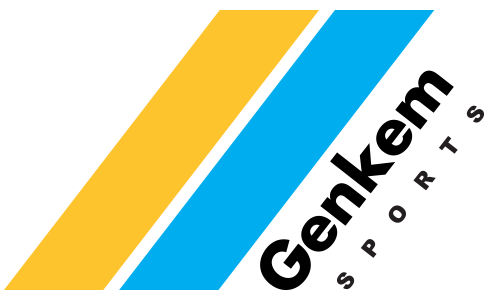Home – KNOWLEDGE CENTRE – PREPARATION & MAINTENANCE – MAINTENANCE
MAINTENANCE
GENKEM COURTCOAT is a 100% acrylic sport surfaces are very durable and require little maintenance. Basic cleaning will go a long way in preventing premature wear and staining. Here are some tips for maintaining your investment and extending the life of your sport surface between resurfacing cycles.
CLEAN YOUR COURT REGULARLY
Once a month is suggested. Watch for evidence of mould or mildew in shaded areas and corners where organic debris tends to accumulate. Indoor courts require both frequent vacuuming and at least one annual wet cleaning with mild detergent solution and soft bristled equipment. Acrylic coatings do not support fungus growth, so growth of fungus or mould is a result from food and drink spills, decaying matter, or other foreign materials on the surface feeding these organisms.
To remove mould, fungus & other organisms on the acrylic surface use:
– 2 parts household bleach, mixed with 1 part water. Use this solution to treat affected areas. Scrub gently with soft bristled brush and rinse thoroughly after a few minutes.
– Rinsing court with water is usually sufficient for general cleaning. If there are visible stains on the court surface, a mild detergent can be applied prior to gentle scrubbing with a soft bristled brush.
Here is a mild detergent formula: Genkem Power Clean
Combine 4 parts water with 2 parts TSP (trisodium phosphate) and 1 part household beach, when mildew present.
REMOVE STANDING WATER
Rain showers help clean your court. However, dirt accumulates in standing water, leaving stains and piles of debris. This acts like sandpaper under the players’ feet and creates abrasion on the surface. Remove water from birdbaths as often as possible. Court Irrigation systems around the court should not spray on the court.
REMOVE FOREIGN MATTER
It is especially important to remove leaves in the fall and keep your court free of debris all winter.
USE PROPER EQUIPMENT
Use soft nylon or hair-type brooms for scrubbing your surface. Scrubbing too hard with hard bristles can damage the surface. When using a pressure washer, limit pressure and do not hold tip too close to the surface, or coatings can be damaged. Surface pressure washers save time and do not leave a stripes like hand wands.
DAMAGE PREVENTION
Post signs or banners near the entrance and throughout the court area with court “rules”.
Here are some suggestions:
– Use only non-marking tennis shoes on the court surface
– No bikes, roller blades, or skateboards.
– No chewing gum, food, or drinks (other than water) on the playing surface
– Do not drag chairs, benches or other items over the surface
Use pads underneath chair legs or equipment that is on the court. Anchor benches or any other permanent fixtures to the surface to prevent damage from sliding or dragging.
Protect the surface before driving maintenance vehicles onto the court.
DRAINAGE (OUTDOOR COURTS)
Properly installed drainage systems divert water away from the court and should be inspected from time to time.
– Look for any evident damage to structures and drainpipes
– Clear away any vegetation or debris that may be blocking drains or swales
LANDSCAPING (OUTDOOR COURTS)
Tennis and basketball facilities are designed to be both functional and aesthetically pleasing. Landscape architects take pride in planning such facilities and understand the many benefits of landscaping around them.
Here are some tips related to landscaping and protecting the surface:
– Keep grass and any other vegetation trimmed and away from the court surface
– Minimize the amount of dirt and dust that blows onto the court by mulching planting beds, and planting grass or ground vegetation on any bare areas around the sport facility.
– Blow or sweep walks around and leading into the court to minimize tracking and blowing of debris.
– Protect the surface from weed killer, fertilizer, insect control products and any other chemicals that may potentially damage the court surfacing system.
– Do not over-water vegetation around the court. This can sometimes lead to accumulation of excessive moisture beneath the base. When the court surface heats up from the sun, blisters can form as the moisture evaporates and comes through the acrylic layers.
REPAIR AND RESURFACING
Our recommendation is to have an annual inspection performed in the spring of the year to evaluate the condition of your facility. Most tennis court builders and surfacing contractors offer free or inexpensive maintenance programs like this to their customers.
Here are some of the details they will address in regard to surfacing:
– Overall condition and appearance of the facility
– Surface damage, birdbaths, or cracks that have appeared or reopened
– Performance of the drainage system.
– Areas of premature wear or damage. Identify causes.
– Condition of the surfacing system: texture, fading, stains, mould or mildew growth
– Condition of tennis court accessories: Tennis nets and net posts, windscreen, centre strap, etc.
